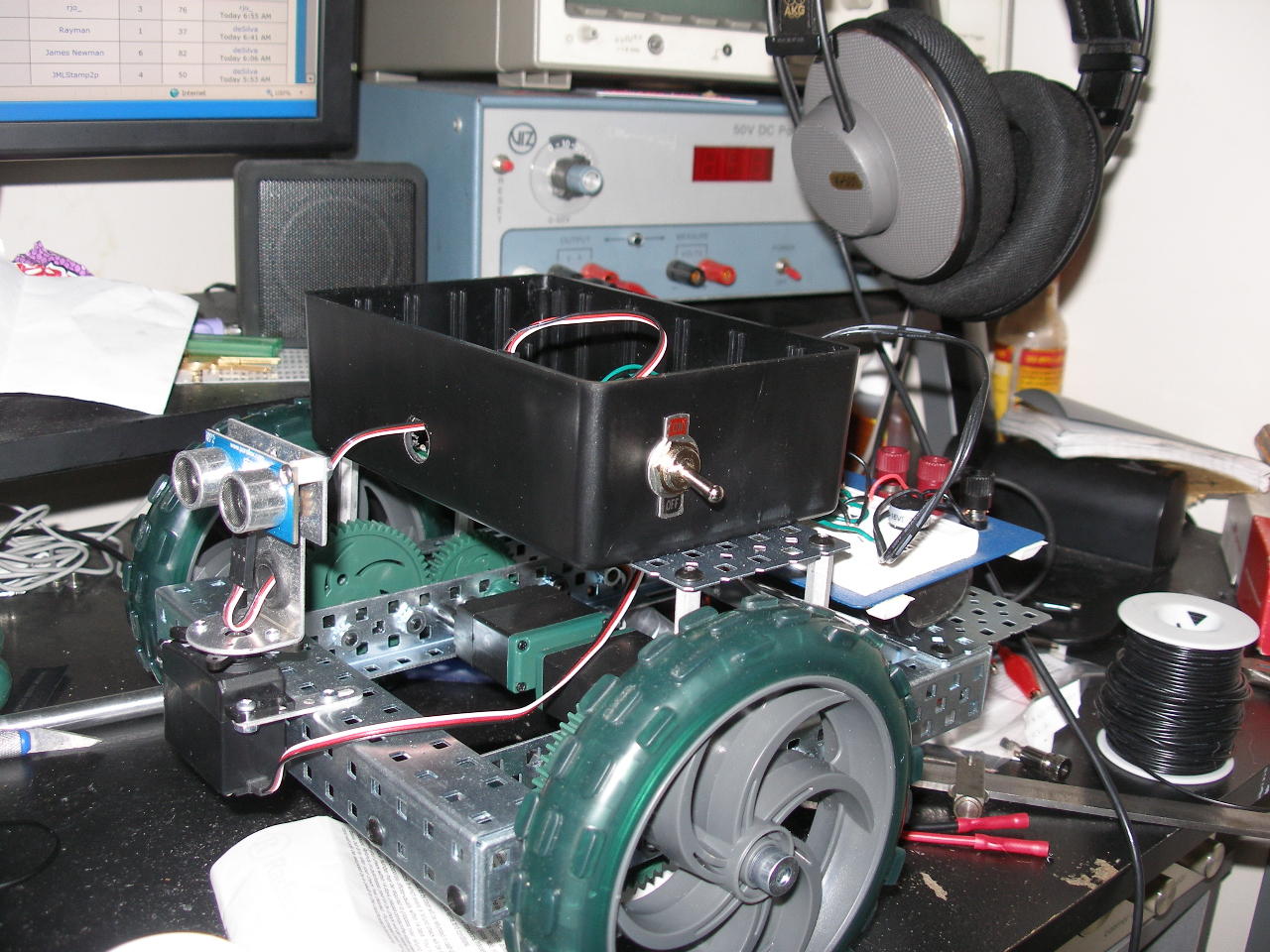IR Sensor for my robot?
Im currently in the process of designing building and programming a propeller-powered firefighting robot for the expert division of the trinity college firefighting robot competition this april.
Can anyone reccomend a good IR sensor for distinguishing between essentially 3 different temperatures - ambient room, baby (bulb painted black, around 100F) and candle (400F ish?)
Thanks...
·
▔▔▔▔▔▔▔▔▔▔▔▔▔▔▔▔▔▔▔▔▔▔▔▔
Lenny Bogdanov
Systems Concept Center
Post Edited (lenny1337) : 12/9/2007 7:39:41 PM GMT
Can anyone reccomend a good IR sensor for distinguishing between essentially 3 different temperatures - ambient room, baby (bulb painted black, around 100F) and candle (400F ish?)
Thanks...
·
▔▔▔▔▔▔▔▔▔▔▔▔▔▔▔▔▔▔▔▔▔▔▔▔
Lenny Bogdanov
Systems Concept Center
Post Edited (lenny1337) : 12/9/2007 7:39:41 PM GMT



Comments
What constitutes a LOW, MEDium or HIGH reading will have to be determined experimentally.
▔▔▔▔▔▔▔▔▔▔▔▔▔▔▔▔▔▔▔▔▔▔▔▔
Paul Baker
Propeller Applications Engineer
Parallax, Inc.
UV sensors are normally used for flame detection but the price of Thermopile sensors are falling.
http://www.melexis.com/Sensor_ICs_Infrared_and_Optical/Infrared/Digital_plug__play_infrared_thermometer_in_a_TO-can_615.aspx
I have even seen cheap non contact temperature probes now sold in stores.
Similar sensors are used in the ear temp thermometers.
Pyroelectric sensors are AC, piezo based, so need a mechnical chopper and amps·to get different temp levels.
Gavin
·
▔▔▔▔▔▔▔▔▔▔▔▔▔▔▔▔▔▔▔▔▔▔▔▔
Paul Baker
Propeller Applications Engineer
Parallax, Inc.
Post Edited (Paul Baker (Parallax)) : 12/11/2007 2:29:56 AM GMT
▔▔▔▔▔▔▔▔▔▔▔▔▔▔▔▔▔▔▔▔▔▔▔▔
Lenny Bogdanov
Systems Concept Center